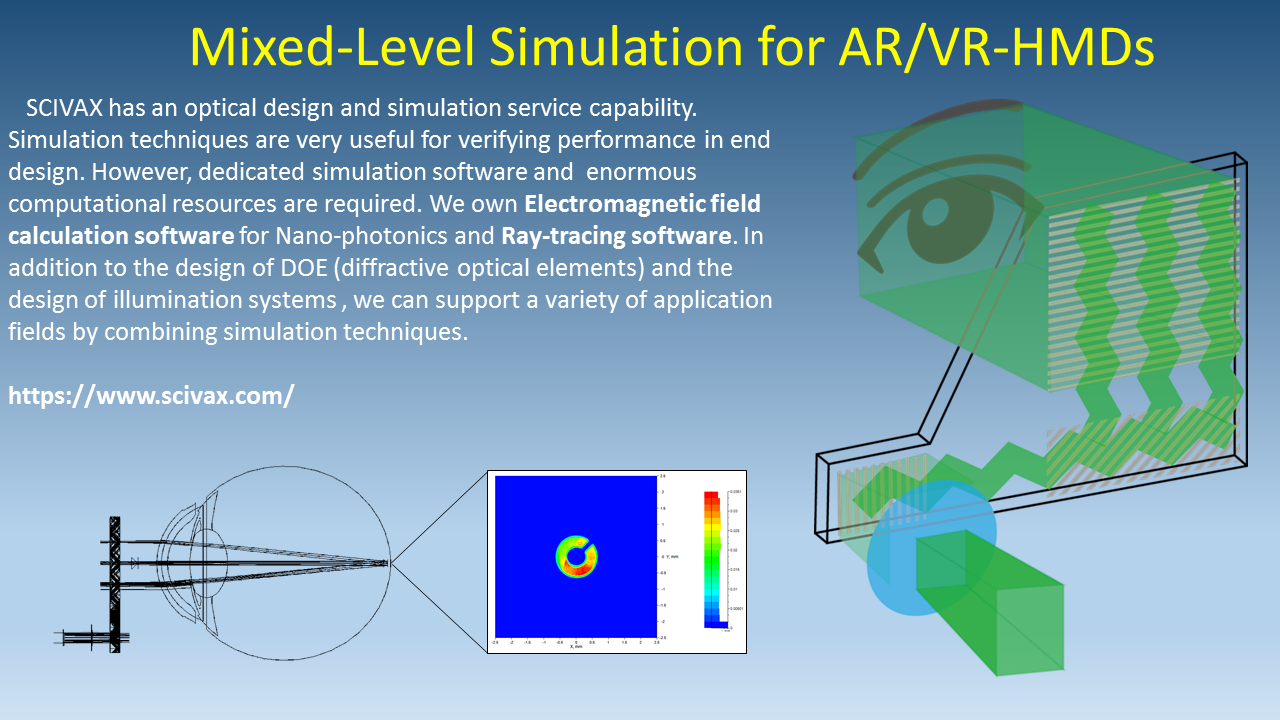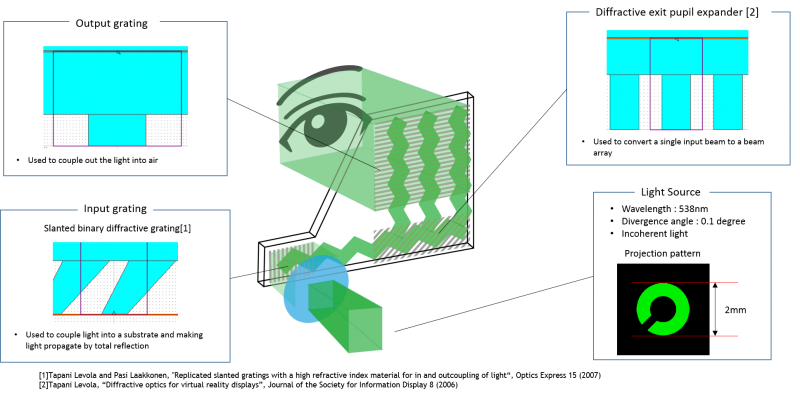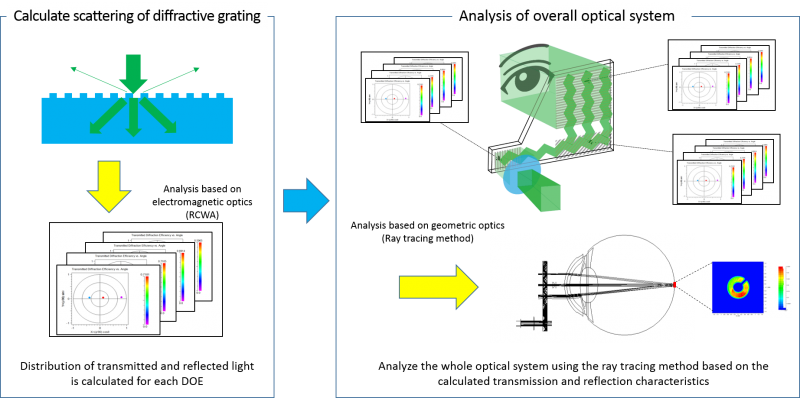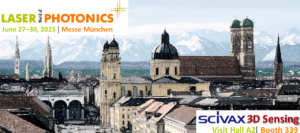
【Event】SCIVAX will exhibit at NNT(2024) & NIL Industrial Day
<<NNT(2024) & NIL Industrial Day>> We will participate in NNT(2024) & NIL Industrial Day.
HOME / 【Information】Simulation Example | Design of Head-mounted Displays for Augmented/Virtual Reality Applications

SCIVAX has an optical design and simulation service capability.
Simulation techniques are very useful for verifying performance in end design. However, dedicated simulation software and enormous computational resources are required. We own Electromagnetic field calculation software for nano-photonics and Non-sequential Ray-tracing software. In addition to the design of DOE (diffractive optical elements) and the design of illumination systems using LEDs, we can support a variety of application fields by combining simulation techniques.
This time we present an example of optical design and analysis of AR/VR(Augmented/Virtual Reality) HMD(Head-mounted displays) with planar waveguides and diffraction gratings.

AR/VR HMD requires small size and low weights. Optical systems which use diffraction gratings and planar light guides are easier in reducing weight compared to systems which uses half mirrors or optical prisms.
In this case, we use an optical waveguide with three gratings. The input grating couples the input beam into the substrate and make light propagates by total reflection. EPE(Exit pupil expander)※1 grating expands input beam. The light is coupled out from substrate into air and guided into human eye balls.
In this simplified example, we designed an optical systems of HMD for demonstration purpose. More accurate design is required for the actual product design.
※1 Exit pupil expander(EPE ) ・・・・・・the optical device that expands the volume of space within which an effectively viewable image is formed (Eye-Box) and makes eyes and display alignment easier.

We use a mixed-level approach based on both electromagnetic optics and geometric optics in following steps.
Step 1. calculate scattering from these diffractive gratings by RCWA(rigorous coupled wave analysis) ※2
Step 2. incorporate into ray tracing simulator these characterization and obtain overall device performance.
In this method, we characterize the nanometer-scale diffraction grating by electromagnetic optics and characterize the propagation of millimeter-scale light in the whole optical system by geometric optics, thereby achieving both accuracy and high speed.
※2 RCWA・・・・・・A method of calculating diffraction efficiency of electromagnetic waves with periodic structure

The following image shows simulation result of the illuminance distribution of the light emitted from the output grating and the light in the retina in the case where the positions of the eyes and the output grating are matched.
It can be seen that the light radiated from the output grading gathers on the retina of the eye and the inverted Landolt’s ring is imaged.

Furthermore, we show the case when the eyeball is off centered from the output image. It is confirmed that the illumination distribution changes and that the image is imaged at the same location on the retina.

▼ If you have any questions or unclear points, please feel free to cotact us.
https://www.scivax.com/en/inquiry/

<<NNT(2024) & NIL Industrial Day>> We will participate in NNT(2024) & NIL Industrial Day.
SCIVAX will participate in Semicon Twaian 2023. We will exhibit the ToF system for 3D sensing at the

<<LASER World of PHOTONICS 2023>> ■Date : June 27 – 30, 2023 ■Venue : Messe München, Germany ■BOOTH

NANOBIC 7-7,
Shinkawasaki,
Saiwai-ku, Kawasaki City,
Kanagawa Prefecture
212-0032